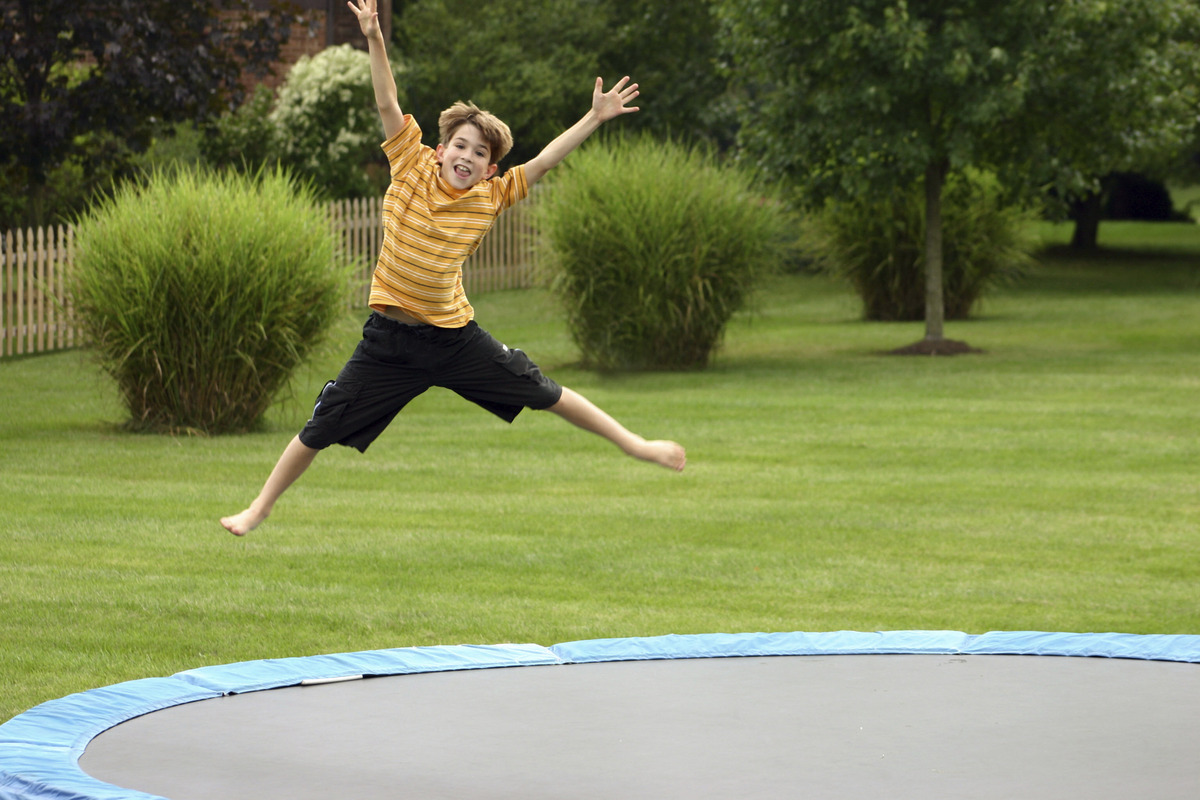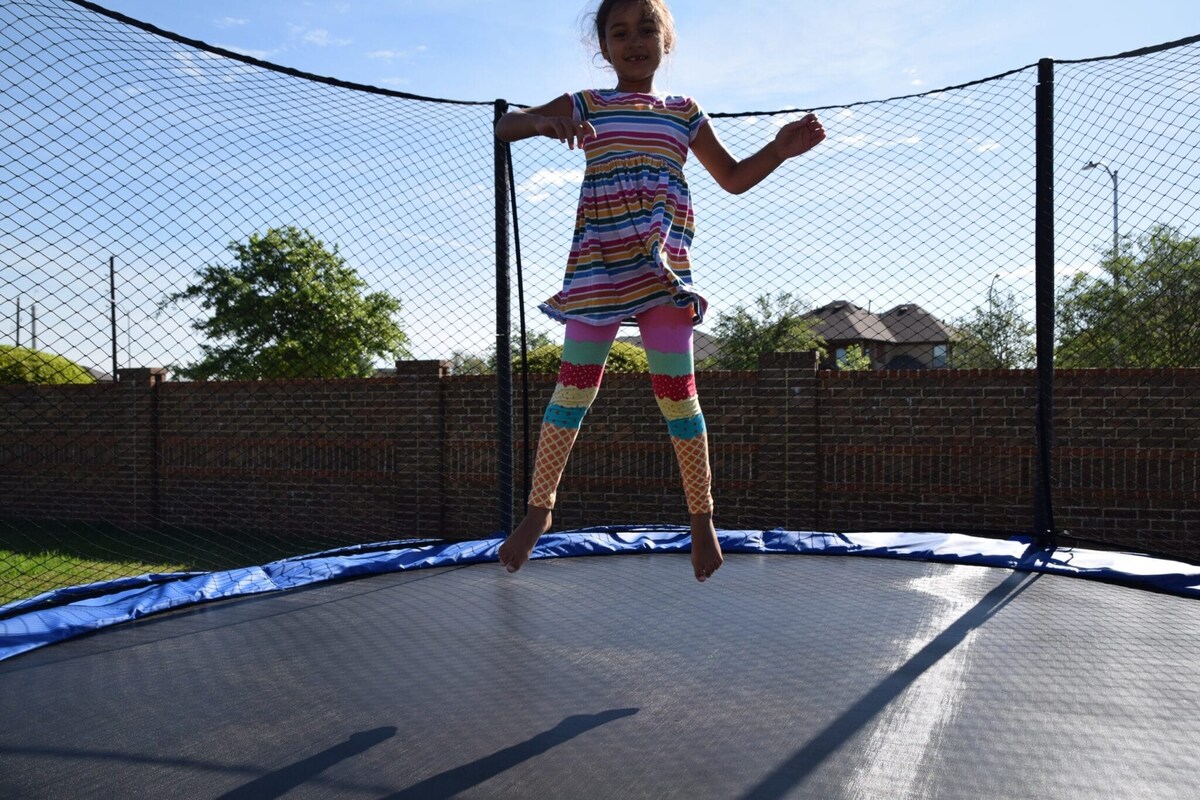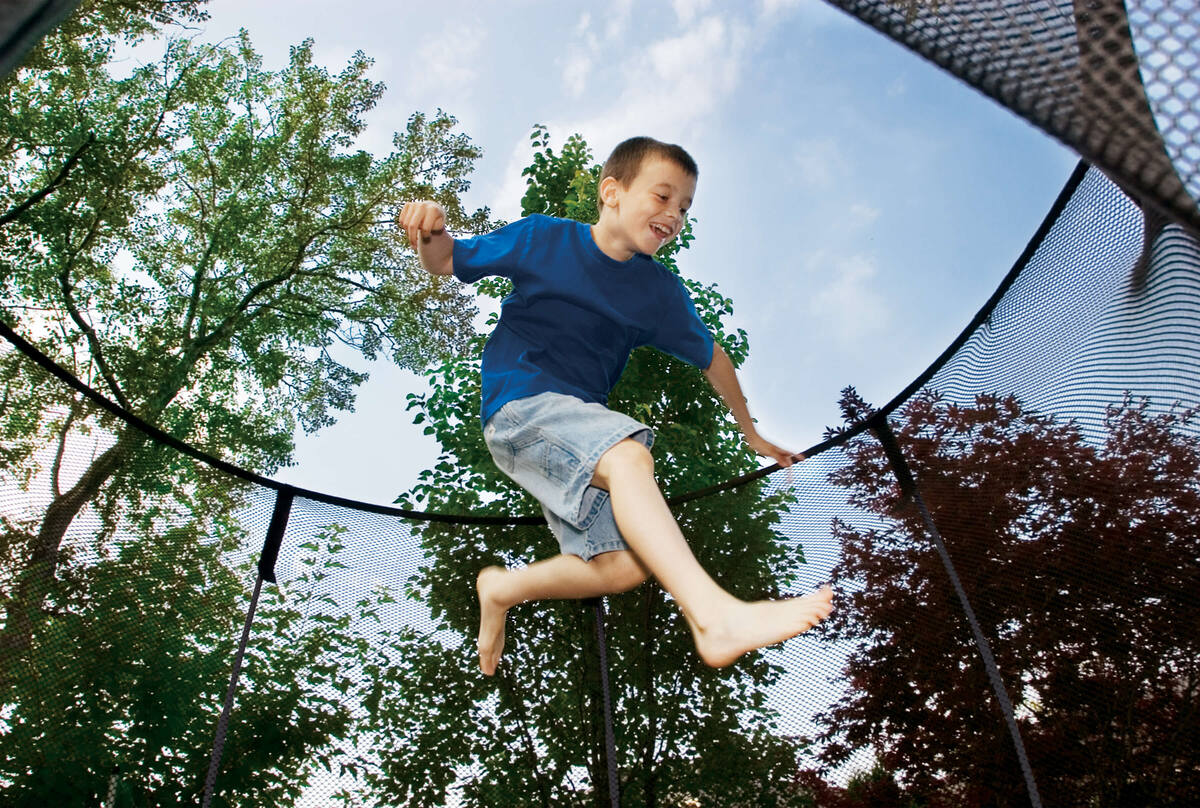Home>Gardening & Outdoor>Outdoor Recreation & Activities>What Type Of Energy Is Jumping On A Trampoline


Outdoor Recreation & Activities
What Type Of Energy Is Jumping On A Trampoline
Modified: January 6, 2024
Discover the fun and fitness benefits of outdoor recreation and activities like trampoline jumping. Learn about the energy involved and how it can enhance your health and well-being.
(Many of the links in this article redirect to a specific reviewed product. Your purchase of these products through affiliate links helps to generate commission for Storables.com, at no extra cost. Learn more)
Introduction
Welcome to the world of trampolining, where the joy of bouncing meets the science of energy. Have you ever wondered what type of energy is involved when you jump on a trampoline? Trampolining is not just a fun and exhilarating activity; it's also a fascinating display of energy transformation. In this article, we'll explore the different forms of energy at play when you bounce on a trampoline, from kinetic energy to potential energy and the overall mechanical energy involved. By understanding the science behind trampolining, you'll gain a deeper appreciation for this beloved recreational pursuit. So, let's dive into the physics of trampolining and uncover the energetic dynamics that make it such an engaging and energizing experience.
Key Takeaways:
- Trampolining involves kinetic energy when you bounce, potential energy at the peak, and mechanical energy throughout. Understanding these energies adds excitement and appreciation to the bouncing experience.
- By harnessing kinetic and potential energy, trampolinists can achieve greater heights and execute precise movements with grace and agility, adding depth and scientific fascination to this beloved recreational activity.
Read more: How To Jump On A Trampoline
Kinetic Energy
When you take that first leap onto a trampoline, you set in motion a captivating display of kinetic energy. Kinetic energy is the energy possessed by an object due to its motion. In the context of trampolining, your movement on the trampoline mat generates kinetic energy as your body accelerates and decelerates with each bounce. As you push off the trampoline surface, your muscles work to propel you upward, converting the stored energy from your muscles into kinetic energy. This kinetic energy reaches its peak as you ascend and momentarily come to a stop at the highest point of your bounce. At this moment, your body possesses maximum kinetic energy as a result of its velocity and mass.
As gravity pulls you back toward the trampoline mat, your kinetic energy begins to transform into potential energy. This seamless interplay between kinetic and potential energy is at the heart of the trampolining experience, creating a dynamic and exhilarating sensation with each successive bounce.
Understanding the role of kinetic energy in trampolining not only adds a layer of scientific intrigue to the activity but also highlights the importance of proper technique and body control. By harnessing and directing kinetic energy, trampolinists can execute impressive maneuvers and achieve greater heights, all while experiencing the exhilarating sensation of controlled motion and energy transfer.
Potential Energy
As you soar through the air on a trampoline, you are not only experiencing the thrill of flight but also engaging with the concept of potential energy. Potential energy is the energy that an object possesses due to its position or state. In the context of trampolining, potential energy comes into play as you reach the peak of your bounce, suspended momentarily in mid-air before gravity pulls you back down.
When you push off the trampoline mat, your initial kinetic energy is gradually converted into potential energy as you ascend. At the highest point of your bounce, your body possesses maximum potential energy, stored within the gravitational field. This potential energy is ready to be released as you begin your descent, transforming back into kinetic energy as you accelerate toward the trampoline surface.
Understanding potential energy adds a fascinating dimension to the trampolining experience, as it illuminates the intricate interplay between gravitational forces and the body’s dynamic movements. The sensation of weightlessness at the peak of a bounce is a testament to the presence of potential energy, poised to be unleashed as the trampolinist transitions into the next phase of the bouncing cycle.
Furthermore, the concept of potential energy underscores the importance of body positioning and control during trampolining. By optimizing their posture and movements, trampolinists can effectively manipulate potential energy, achieving greater heights and executing precise aerial maneuvers with grace and agility.
As you continue to explore the physics of trampolining, the concept of potential energy serves as a captivating reminder of the intricate energy transformations that unfold with each exhilarating bounce, adding depth and scientific fascination to this beloved recreational activity.
When jumping on a trampoline, the energy being used is mainly kinetic energy. This is the energy of motion, which increases as you bounce higher and move faster.
Mechanical Energy
Trampolining is a captivating showcase of mechanical energy, encompassing both kinetic and potential energy as integral components of the overall energetic experience. The concept of mechanical energy encapsulates the sum of an object’s kinetic and potential energies within a mechanical system, providing a comprehensive perspective on the dynamic interplay of motion and position.
As you engage in trampolining, the seamless transition between kinetic and potential energy exemplifies the presence of mechanical energy. With each bounce, your body harnesses and transforms energy, propelling you upward to experience the exhilarating sensation of flight before returning to the trampoline mat. This rhythmic exchange of kinetic and potential energy underscores the captivating nature of mechanical energy, as it drives the continuous motion and energetic dynamics of trampolining.
Moreover, the concept of mechanical energy extends beyond individual bounces, encompassing the collective energy transformations that unfold throughout a trampolining session. Whether executing intricate flips and twists or simply reveling in the joy of bouncing, trampolinists actively engage with the principles of mechanical energy, orchestrating a symphony of motion and vitality with each movement.
Understanding the role of mechanical energy in trampolining not only deepens one’s appreciation for the physical and energetic aspects of the activity but also underscores the interconnected nature of energy transformation within a dynamic system. By embracing the concept of mechanical energy, trampolinists can enhance their understanding of the energetic forces at play, fostering a greater sense of control, precision, and exhilaration as they bounce, soar, and revel in the boundless energy of trampolining.
Conclusion
As we conclude our exploration of the energetic dynamics of trampolining, it becomes evident that this beloved recreational activity is not only a source of boundless joy and exhilaration but also a captivating display of energy transformation. From the initial leap onto the trampoline to the rhythmic exchange of kinetic and potential energy with each successive bounce, trampolining offers a compelling blend of physical prowess and scientific intrigue.
By delving into the concepts of kinetic energy, potential energy, and the overarching mechanical energy at play, we gain a deeper understanding of the energetic forces that propel us skyward and infuse each bounce with dynamic vitality. The interplay of kinetic and potential energy, intertwined within the framework of mechanical energy, creates a symphony of motion and vitality that defines the trampolining experience.
Furthermore, our exploration of energy in trampolining highlights the importance of technique, body control, and energy optimization. Trampolinists, whether engaging in recreational bouncing or pursuing advanced aerial maneuvers, actively manipulate and harness energy to achieve greater heights and execute precise movements with grace and agility.
Ultimately, the physics of trampolining offers a fascinating lens through which to view the energetic interplay between human movement and the forces of nature. By embracing the science behind the bounce, trampolinists can enhance their appreciation for the dynamic energy transformations that unfold with each leap, fostering a deeper connection to the exhilarating and energizing essence of trampolining.
So, the next time you embark on a trampolining adventure, take a moment to marvel at the captivating display of energy at play, from the kinetic energy that propels you upward to the potential energy that suspends you in mid-air, all encompassed within the vibrant tapestry of mechanical energy. Embrace the physics, savor the bounce, and revel in the dynamic vitality of trampolining.
Frequently Asked Questions about What Type Of Energy Is Jumping On A Trampoline
Was this page helpful?
At Storables.com, we guarantee accurate and reliable information. Our content, validated by Expert Board Contributors, is crafted following stringent Editorial Policies. We're committed to providing you with well-researched, expert-backed insights for all your informational needs.
















0 thoughts on “What Type Of Energy Is Jumping On A Trampoline”